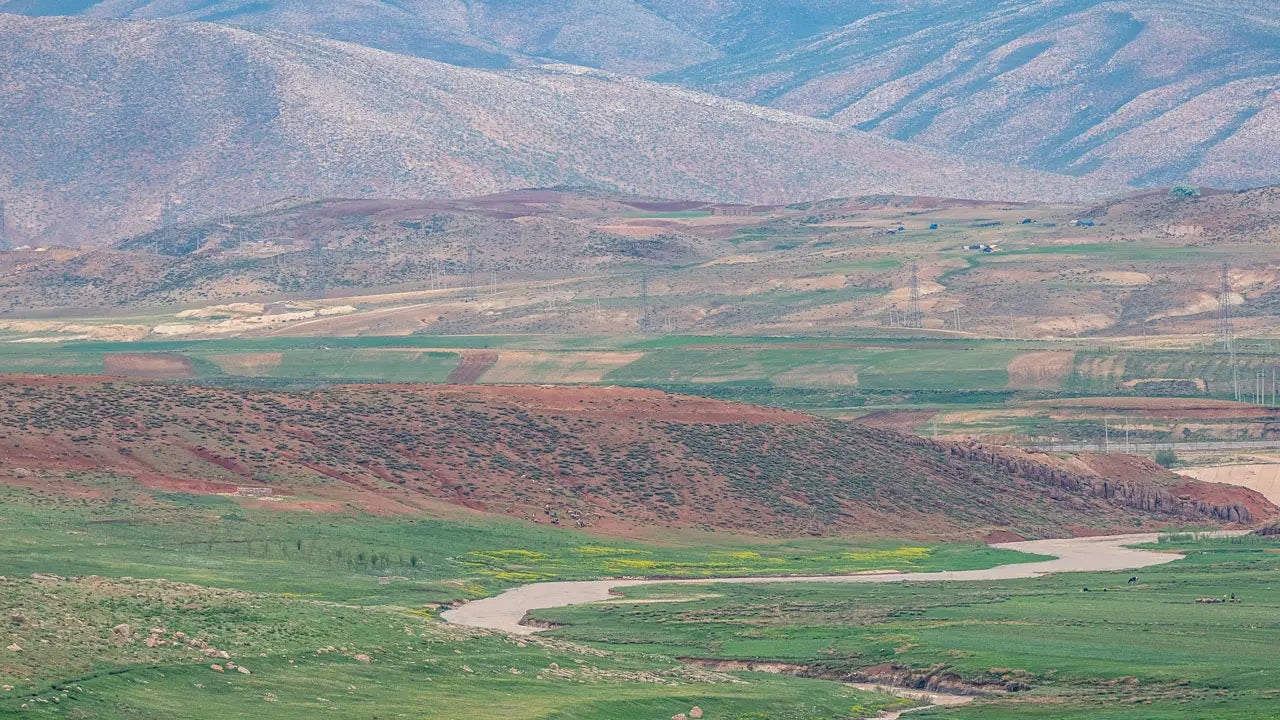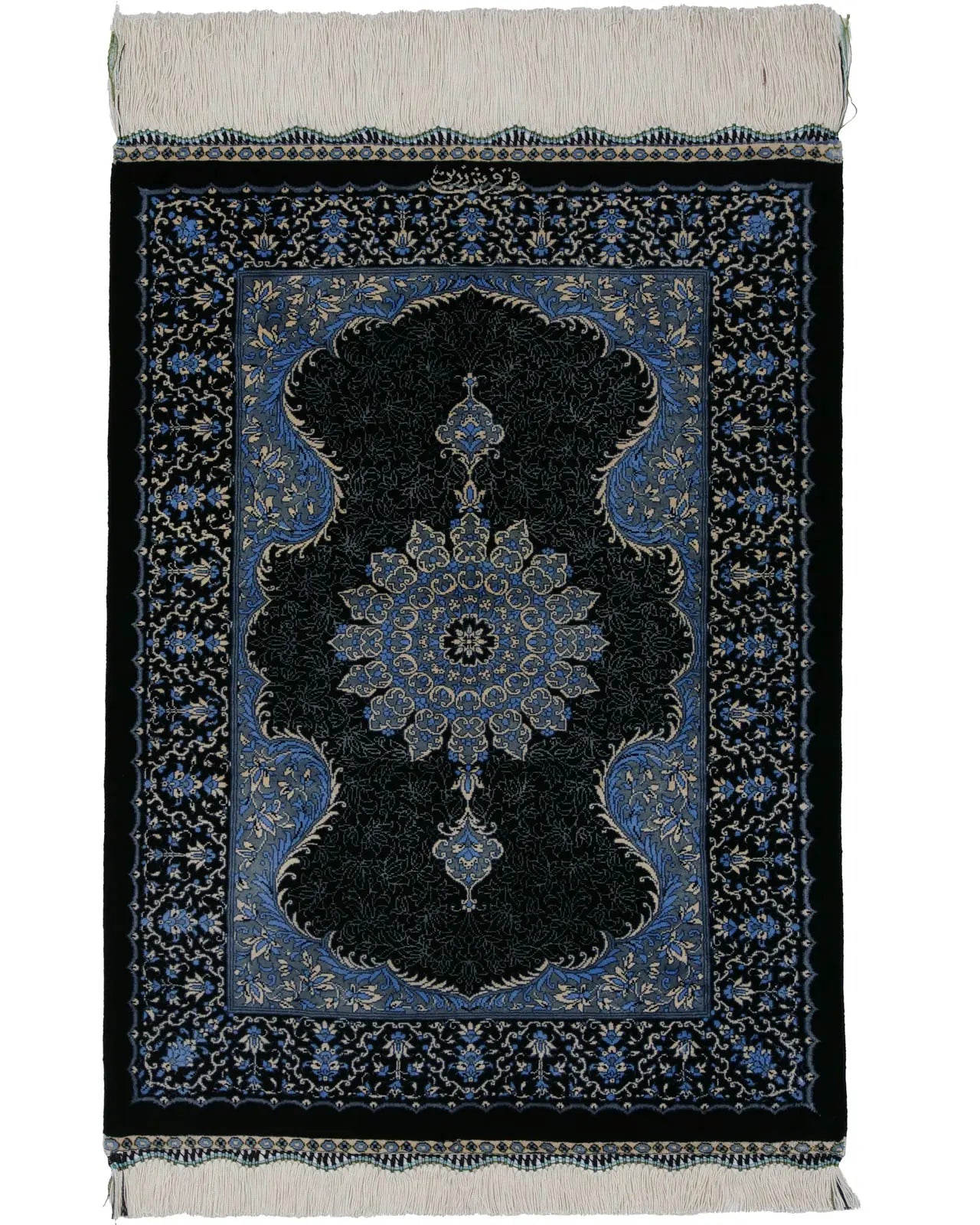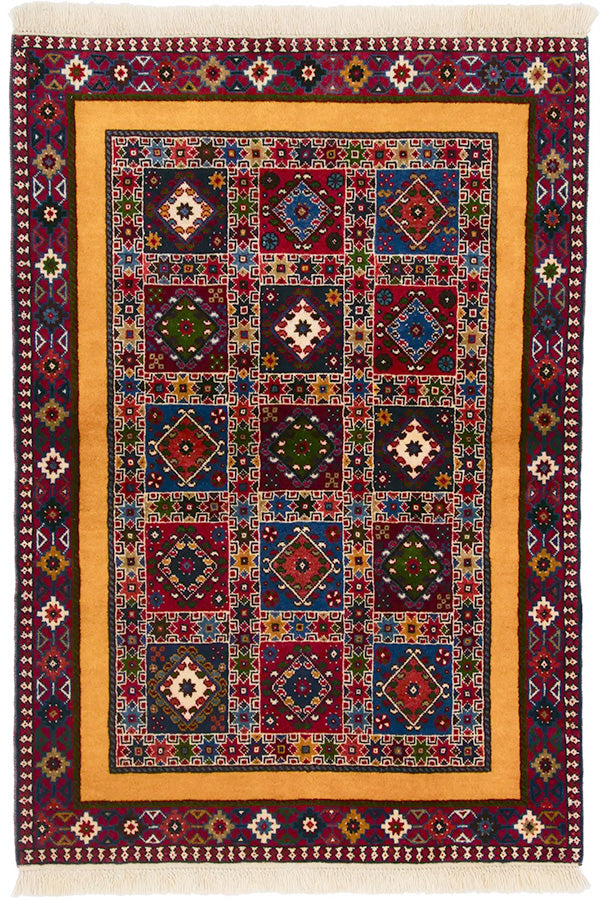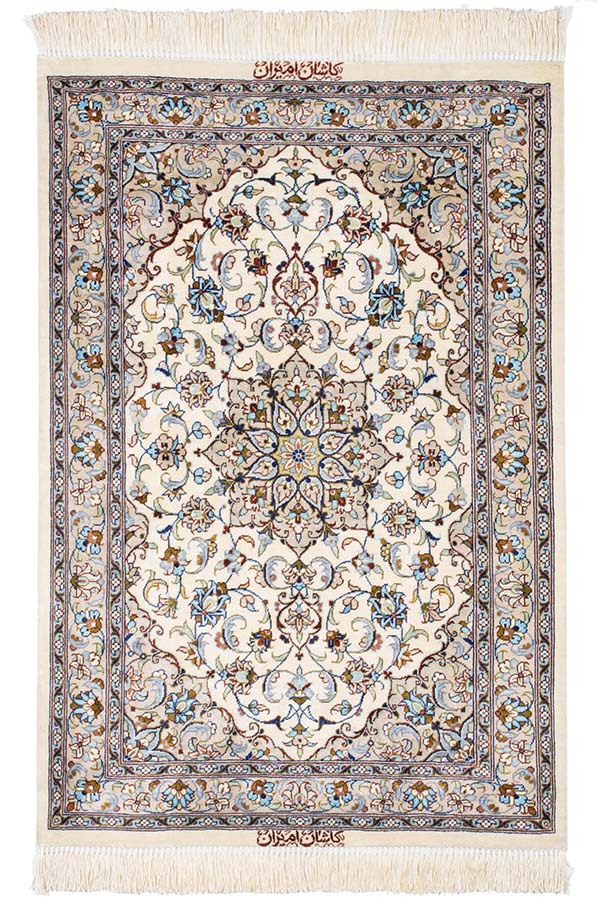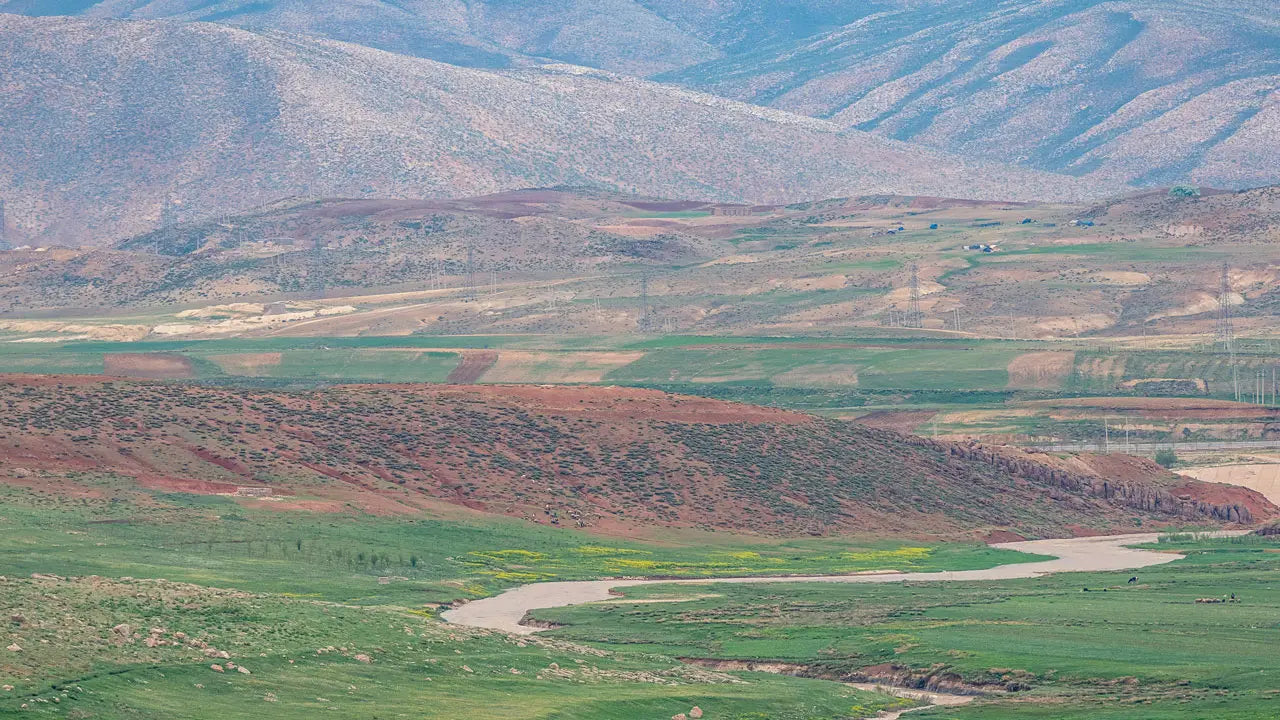
Bakhtiari
Type: Persian carpet
Location: West of Isfahan (Old Persia)
Knot Density: 150,000 - 350,000 knots per square meter
Special feature: Garden motif with plants and animals
Pile: Wool
Bakhtiari rugs are one of the principal art forms of the Bakhtiari people, who live in the Chaharmahal and Bakhtiari Province of Iran. Originally woven by nomadic Bakhtiari tribes, today the most authentic Bakhtiari carpets are made by settled Bakhtiari communities in this province as well as parts of Isfahan, Lorestan, and eastern Khuzestan.
These rugs are made from strong, durable wool and are named after the Bakhtiari nomads who live in the Zagros Mountains southwest of Isfahan. Known for their exceptional toughness, Bakhtiari rugs are woven with thick wool, making them more resistant to wear compared to other Persian rugs. While they do not use the finer, softer kork (lamb’s neck) wool found in some urban carpets, their durability makes them ideal for everyday use.
Many Bakhtiari rugs feature motifs inspired by gardens. The popular “Chesti” pattern—resembling a grid or panel layout—often includes depictions of plants and animals, echoing the imagery of traditional Persian gardens. In some cases, their designs also resemble those found in the Isfahan weaving tradition.
These rugs are commonly used in entryways and hallways in Iranian homes, valued for both their beauty and resilience.
